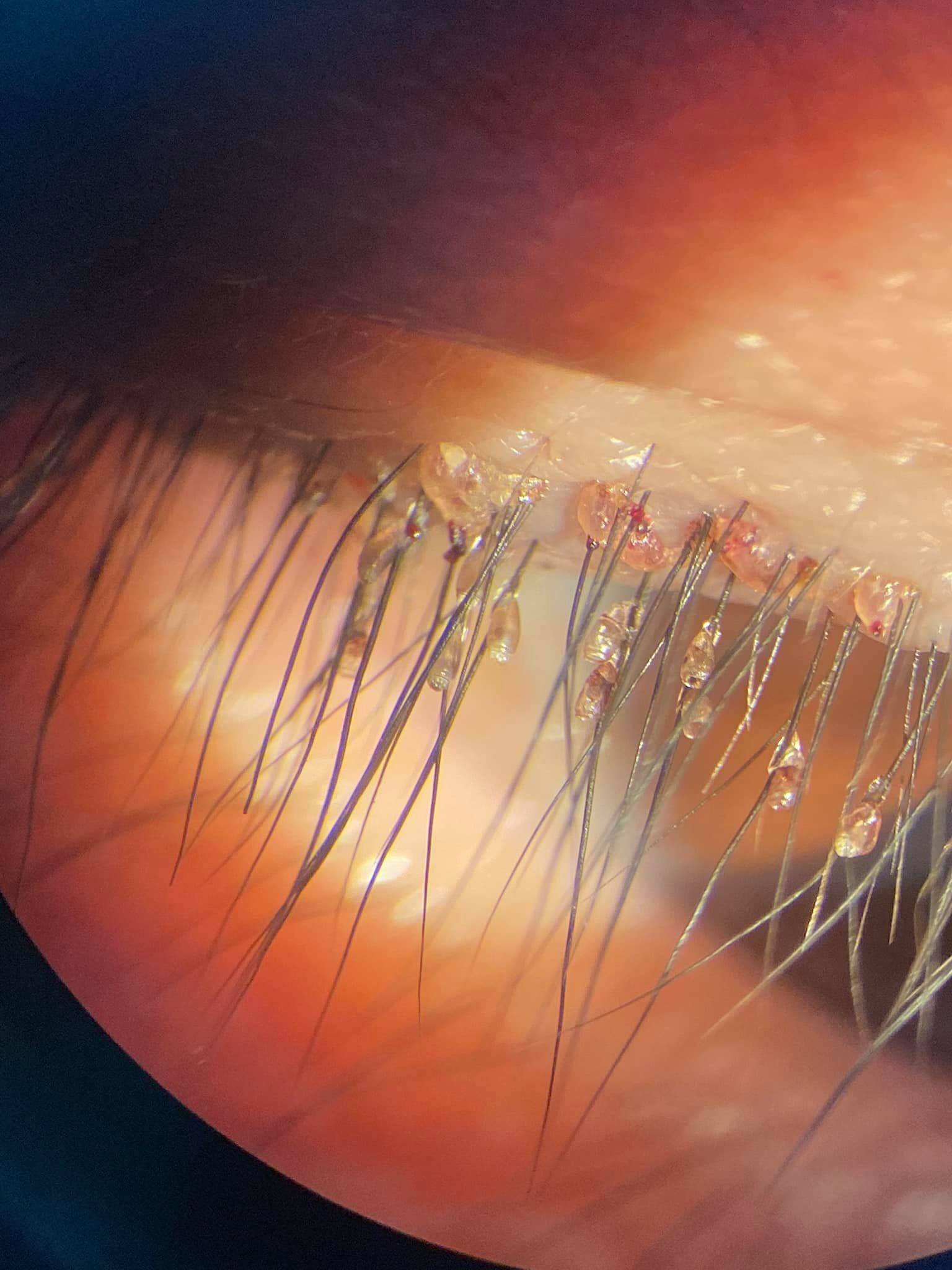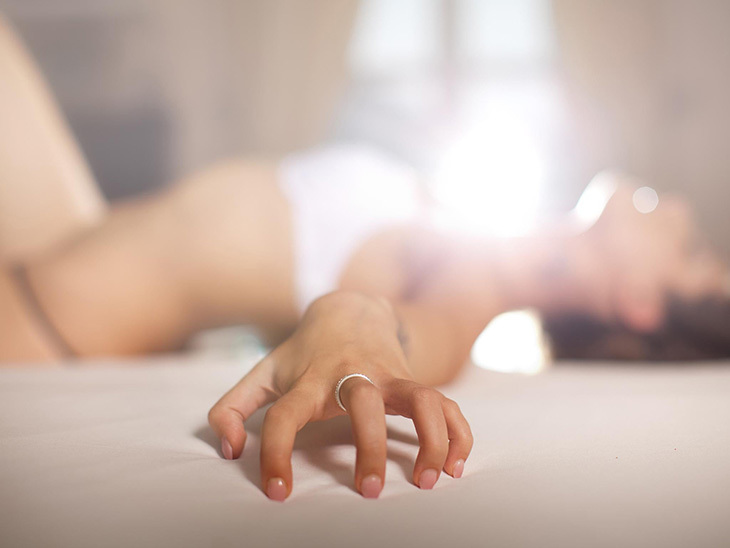Terrified 100 pubic lice nest on the man’s eyelids, the doctor instructs how to prevent
Itchy eyes can be treated but not cured. If you go to a specialist, your eyes will be examined under a microscope, the patient “falls down” when there are hundreds of pubic lice parasites residing.
Itchy eyes are caused by many causes such as: Blepharitis, parasites, fungi or allergic conjunctivitis, but itchy eyes due to pubic lice are rare.
This rare case happened to a 55-year-old male patient with an address in Ha Giang.
The patient came to Hung Vuong General Hospital (Phu Tho) for examination with the reason that his eyes were itchy. He had been examined and given medication at a number of hospitals near his home but did not get better.
Going to the eye specialist at Hung Vuong General Hospital, the patient’s eyes were examined under the microscope, and “fire” because there were hundreds of parasites and parasitic eggs on the patient’s eyelids.
The doctor performed local anesthesia and removed nearly 100 pubic lice parasites and more than 100 eggs.
According to the patient, the family has poultry and livestock under the floor and that may be the cause of his infection with pubic lice parasites on his eyes.
Through this case, eye specialists at Hung Vuong General Hospital recommend to people that they should clean their bodies and houses because parasites can live and live anywhere, can live on parasites. human body.
According to Dr. Tran Van Dung, Institute of Malaria, Parasitology and Insects in Ho Chi Minh City, pubic lice, also known as pubic lice, crab lice, crab lice, inguinal lice.
Pubic lice are caused by a species of lice whose scientific name is Pthirus pubis. They are a species of louse, with 6 legs, with joints in the legs, belonging to the group of blood-sucking insects without wings. They are known to be the only parasite found in humans. According to the results of genetic research, they have caused disease in humans for more than 3 million years.
They live and reproduce mainly on the sensitive part of humans: the pubic area. However, they can be found anywhere there is hair on the human body. They have been recorded in hair, eyelashes, mustache, beard, armpit hair, belly hair, anal hair, including arm and leg hair.
The prevalence of the disease in the world population is about 2%. Recently, the incidence in the West and the United States is rare, mainly due to the movement of pubic hair removal.
Recently, the disease reappeared in Vietnam. Mainly due to immigrant groups and slums, low economic areas. Vietnam is going through a new phase of sexual awareness.
Sexual activity has become more open to young people’s ideology. However, due to lack of knowledge about sex, the spread of the disease is increasing again.
Although they can be found on any part of the body with hair, they most often cause disease in the pubic and anal areas. In particular, they are usually found mainly in males. Men’s hair is usually thicker, denser, and stiffer. In children, pubic lice are often found on the eyelids.
 |
| Image of male patient’s eyelids with a lot of nesting pubic lice parasites |
Currently, there is no record of pubic lice transmitting any disease. What they cause is the itch. Cause: when sucking blood, the saliva of the lice causes allergies.
The saliva of the lice prevents the blood from clotting (like any other blood-sucking insect). Saliva enters the host’s bloodstream, causing pruritus. Pruritus occurs about < 2 weeks after infection.
Itching can range from mild to severe. When scratching due to itching will create scratches on the skin. Bacteria on fingernails and skin areas cause secondary infections and ulcers. If in the eyelashes, the feces and saliva of the louse can lead to conjunctivitis and keratitis. Itching makes patients uncomfortable, insomnia.
The act of scratching the itch makes the patient mentally inhibited. Scratching the diseased area (inguinal, anal) in living conditions in crowded places embarrasses the patient. The itch was so intense that it was impossible to resist scratching.
Red and itchy papules are the most common symptoms. Itching is worse at night. Night is when pubic lice are active to suck blood. Bruises, abrasions, and skin infections are also common in patients.
Other hairy areas of the body can also find eggs.
Occasionally, we can detect lice on a child’s head. It is a sign that the child is likely to be abused.
People infected with pubic lice also need to be diagnosed with other sexually transmitted diseases.
Pubic lice infection is transmitted directly from person to person. It is usually due to the closeness of the hair during sex. Sometimes it is just accidental contact with hair, hair or beard, mustache, rarely sharing underwear, or towels, clothes. The least common is sleeping in the same bed as an infected person.
The reason is that lice are less mobile, often clinging firmly to the hair. When the hairs fall off, the lice can move onto bed sheets and pillows. Lice eggs can be shed and attached to healthy people, then the eggs hatch and the lice suck blood.
Experts also note that, in the following ways, the disease can be controlled: Each person has their own toiletries. Do not share clothing, bedding or towels with others; Having sex with few partners; Avoid sex until you are sure you have been successfully treated; Inform sexual partners to receive treatment together.
N. Huyen
at Blogtuan.info – Source: infonet.vietnamnet.vn – Read the original article here



